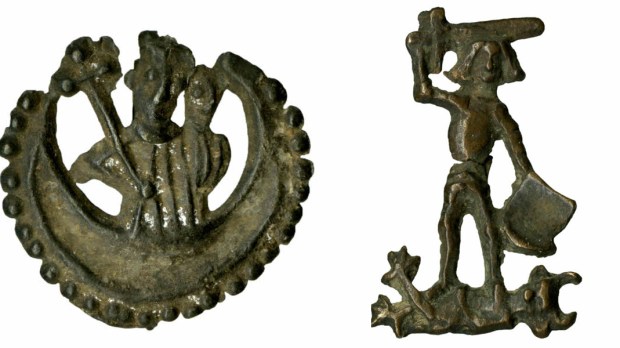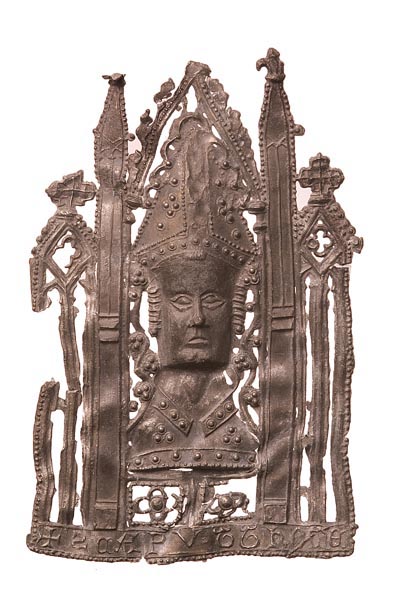Just as we can’t help but stop in a souvenir shop while on vacation in order to remember our trip, medieval Christians on pilgrimages to holy sites acquired “pilgrim badges,” which they wore to commemorate their journeys.
Wearing such a badge would proclaim that one had visited a holy site, and would also bring home some of the graces acquired by being in the presence of holy relics. It was also a self-protective practice for the holy sites themselves, as selling pilgrim badges prevented the pilfering of holy relics.
While the earliest pilgrim badges date back to the seashells collected by pilgrims on the Way of St. James, on their way to visit the shrine at Santiago de Compostela during the 14th and 15th centuries, the production of pilgrim badges flourished as pilgrimages to the Holy Land and shrines across Europe where Catholic saints were venerated became popular. Wearing such a badge would proclaim that one had visited a holy site, and would also bring home some of the graces acquired by being in the presence of holy relics. It was also a self-protective practice for the holy sites themselves, as selling pilgrim badges prevented the pilfering of holy relics.
Usually made of lead alloy, badges were cheaply produced and sold at pilgrimage sites to be worn on the outer clothing and hats, or around the neck. According to the Encyclopedia of Medieval Pilgrimage, the most popular shrines, such as those in Canterbury Cathedral, Santiago de Compostela, Cologne, Our Lady of Rocamadour and Jerusalem, sold as many as 100,000 badges a year.

Read more:
Classic Catholic pilgrimages for your bucket list
The badges included a pin and clasp mechanism or loops to sew them on clothing, and featured imagery from the shrine or the life of the saint who was venerated there. A look at some of the pilgrim badges archaeologists have unearthed gives us a glimpse into the life of the medieval Catholic.
View the slideshow below to see pilgrim badges, the souvenirs of the medieval Christianity.


